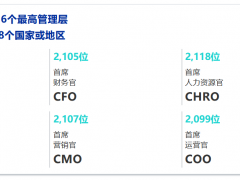At Dell Beijing, Andy Klump (HBS MBA '03) was excelling at his job-selling computer hardware and services solutions to multinationals-when the company's 360-degree performance-review process underwent a change. As part of the new approach, Klump was expected to make an assessment of his boss, a Chinese national, and deliver it to him in person. Recalls Klump, "I had achieved success, was enjoying rapid promotions, and worked well with my manager. When it came time for him to receive feedback, he encouraged direct communication from all team members, all of whom were local Chinese except me, in either a team or a one-on-one setting."
Continues Klump, "I understood enough of Chinese culture to know that you rarely, if ever, confront someone in a group setting, as maintaining face is important. So I waited to have a one-on-one session with my boss, in which I structured my feedback logically and 'toned down' my comments to show respect, while still providing constructive ideas. Initially, he seemed to take the feedback well. But then I gradually noticed a distancing in our relationship. Eventually, I realized that he did not support my further career progression as he had before."
When Klump discussed the matter with a fellow team member, she laughed and told him, "You are too American! No matter how toned down your comments might be, it's still too direct." The incident and its aftermath, Klump says, were largely responsible for prompting him to consider other options in China. "I have no regrets," he adds, "because I learned so much from that experience." Now working in strategic planning for Philip Morris International's China operations, Klump is part of a small management team whose eleven members hail from six different countries.
Klump's experience is a reminder of just how complicated, on a personal level, globalization and managing across cultures can be. On the one hand, the world seems small and interconnected, thanks to high-speed technology, travel, and communications. On the other hand, beneath a deceptive veneer of familiarity, cultural gulfs and local differences often remain hidden.
There is an increasingly international style of management.
John Quelch, HBS
Amid these conflicting realities, however, Harvard Business School alumni report anecdotal evidence that a youthful and growing cosmopolitan business class is bringing these different worlds closer together. Despite national differences, these transnational road warriors frequently have a common grounding in education, professional background, and global popular and business culture. In the arena of international commerce, they share an expectation that differences will be set aside in order to advance with common purpose toward a larger goal-getting the task at hand done right.
Common ground
This convergence among a new generation of international business practitioners has a parallel at the institutional level: International businesses increasingly are conducting themselves on common ground in order to compete globally. They don't necessarily do business the same way-with identical processes, functions, and operations-while approaching this elevated stage; but by the time they attain it, successful companies do share certain qualities and practices not observed in firms that fall short.
Multinational firms have understood for some time that certain activities, such as marketing, must remain local in concept and execution to be successful. At the same time, the defining feature of globalization has been the push by multinationals toward organization-wide rationalization. Efficiencies and commonalities have emerged, particularly with certain production processes but also in backroom functions such as quality assurance and control. In addition, multinationals have been increasingly pressed to move toward international norms in the area of stakeholder relations (e.g., human- and workers-rights issues, and environmental matters). Thus, among its other ramifications, globalization is forcing companies to operate and conduct themselves according to certain international standards and expectations. This trend is inevitably reflected in the way these companies are managed.
"There is an increasingly international style of management," declares HBS professor John Quelch, an expert in international marketing and business development. He describes this style as an amalgam, built atop a U.S. model that has borrowed freely from others around the world. "With the United States accounting for approximately 30 percent of the world's GDP and as the home to 62 out of the 100 most valuable brands in the world, it's not surprising that America is in the driver's seat," Quelch notes. He characterizes the U.S. model of management as focused on immediate outcomes and results and generally accustomed to having its way. But it has an added feature that enables it to remain powerful even as it is transformed.
"When it's advantageous," Quelch explains, "the U.S. system can be very ecumenical, flexible, and open to new ideas and people. It learns from best practices in other countries, and it adapts accordingly. A prime example is America's absorption of Japanese manufacturing techniques in the 1980s." Over time, with this kind of ongoing cross-pollination, today's system of global management, to the extent it can still be called American, will look less like it used to and more like something "multinational."
People are willing to adjust their behavior to facilitate teamwork, but they expect others to make a similar effort.
-Irina Gaida, BCG
HBS professor Rohit Deshpande has discovered that, in order to make themselves globally competitive, successful companies strive to achieve certain characteristics, even if those desired traits are not necessarily found in, or are contrary to, the native business culture of the firm's home country. Thus, while average companies in France, Germany, and Japan may all look quite different from each other, those countries' best-performing multinationals look quite similar. "When you consider the top-quartile companies across multiple sectors such as B2B, B2C, services, political systems, or cultures-you'd be hard-pressed to tell their nationality," says Deshpand? "Among other distinguishing characteristics, these firms tend to have intrapreneurial cultures that encourage and reward risk. They are quick to market and invest a lot in customer insight. A commitment to being customer-centric tends to be deeply embedded throughout the organization."
'Corporate culture trumps national culture'
These findings suggest that excellence in global corporate competition demands certain success-enabling organizational characteristics, attributes that of course must be introduced and/or supported by management. Deshpand?s observation that in top international firms, "corporate culture trumps national culture," is in line with what other studies show. They indicate that as high-performing global companies implement transnational strategy and strive to achieve competitive advantage, decision making by those firms and their individual managers seems to rise above national influences and toward a commonality shared by other top firms in the international arena.
In their study of the software industry in India, HBS professors Tarun Khanna and Krishna Palepu detect signs that globalization in the product and labor markets can, in some cases, cause corporate governance to draw closer to international standards as well. Khanna and Palepu stress, however, that their research also indicates that there is a limit to such convergence and that national influences and systems remain powerful and distinct. With that caveat, Palepu observes, "In general, world-class companies facing global competition do appear to benchmark themselves with global best practices and performance standards." He defines those aspired-to benchmarks as sound corporate governance, transparency, an orientation to quality, and a performance-driven, high-standards organizational culture.
As the best international companies exhibit similarities in certain standards and practices, managers within these firms, despite national and cultural differences, are finding common ground where they can work together. "In a truly multicultural corporate environment, people strive to strike a balance between their own cultural core and being open to other value systems, communication styles, and decision-making processes," observes Irina Gaida (HBS MBA '03). Gaida, a Russian national who has worked in London with United Technologies (in a department whose fifteen members represented seven countries) and in Paris with Bain, is currently in Moscow with BCG (Boston Consulting Group). "People are willing to adjust their behavior to facilitate teamwork, but they expect others to make a similar effort," Gaida notes. "This mutual adjustment eventually becomes the norm within an organization."
At Philip Morris International's Beijing office, Andy Klump says, "There is an emerging international business style, but it varies dramatically by company. While Dell China's organization had American attributes, and while higher-level management interaction with international departments was common, its day-to-day management style was localized and gave limited international exposure to some managers. By contrast, at Philip Morris International, a Switzerland-based company, there is a high degree of regional and international interactions which, by default, require employees at many different levels to have an understanding of different styles and ways of conducting business. My management team members, from six different countries and a variety of educational experiences, have adopted a similar style that allows them to coexist with colleagues from vastly different backgrounds."
It's important to remember that one can be innovative in very different ways in Brazil, or Japan, or India, or the United States.
-Rohit Deshpand? HBS
Mary Moses (HBS MBA '03) is an American who works for VASC, a state-owned Vietnamese telecom and media company. "The people who manage business well in a foreign environment do create a new style of doing business that blends the best of both Western and local practices," she says. "Unfortunately, this is more the exception than the norm. Far too many try to enforce a Western style upon the local culture or, even worse, adopt the most convenient, and often the worst, of both cultures."
Global standards for the workplace
Having spent time previously in several countries as a Monitor and McKinsey consultant, Aaron Pempel (HBS MBA '98) has lived full time in Mexico for nearly two years as a Nike executive. "I absolutely believe there are emerging global universal standards for work, driven to a great extent by the large multinationals," says Pempel. For evidence of that, he need look no farther than his own place of employment. For its operations in Mexico, where the tradition of the two-hour lunch is still strong in many places, Nike switched to a one-hour lunch break. For some Mexican employees, the decision significantly altered lifestyles and custom. Working mothers, for example, could no longer use the extra hour to pick up children from school and share a meal with the entire family. Yet a majority of the company's employees voted to make the change. In moving closer to the international standard, Nike's corporate culture, in effect, trumped an element of national culture.
In the end, says John Quelch, "The integration of the global economy is such that no one anywhere is insulated. And one naturally wants to take what seems to be the best from wherever one can find it. That is what a multinational does梚t leverages its status as an international corporation by taking the best ideas from everywhere it has a presence and implementing them worldwide throughout its entire system."
Rohit Deshpande also sees local context as integral to the global big picture. "If an innovative, entrepreneurial culture benefits customers wherever they are in the world, it's important to remember that one can be innovative in very different ways in Brazil, or Japan, or India, or the United States," he declares. "In my view, globalization is not forcing an American model across the world. What globalization is doing is creating a successful business-practice model."
From the Harvard Business School Bulletin, June 2005.
 手机版|
手机版|

 二维码|
二维码|








